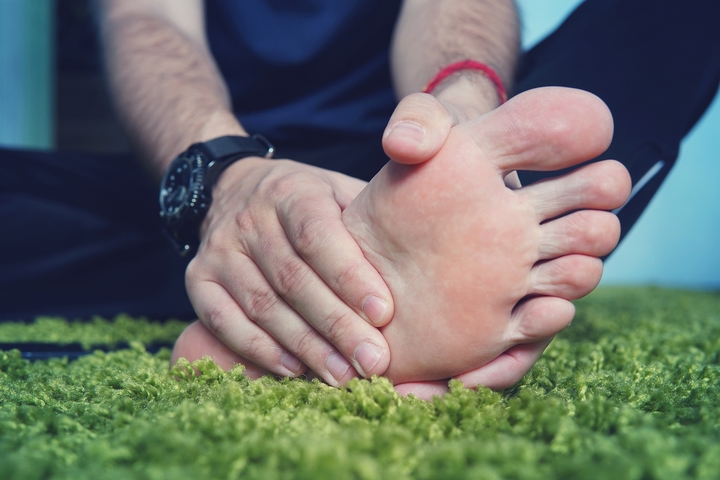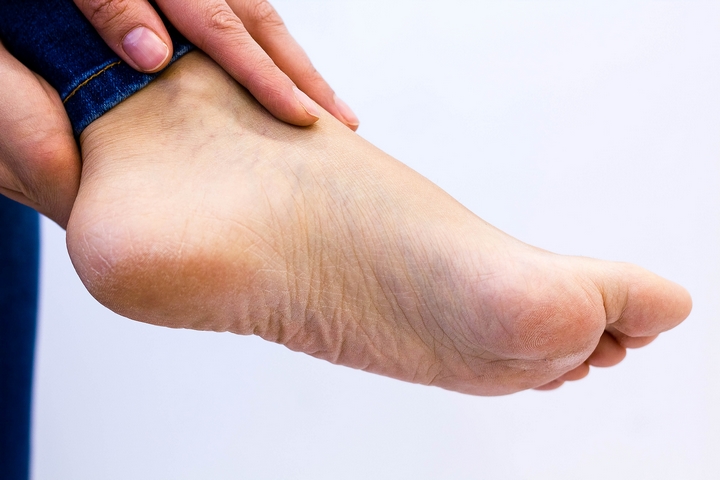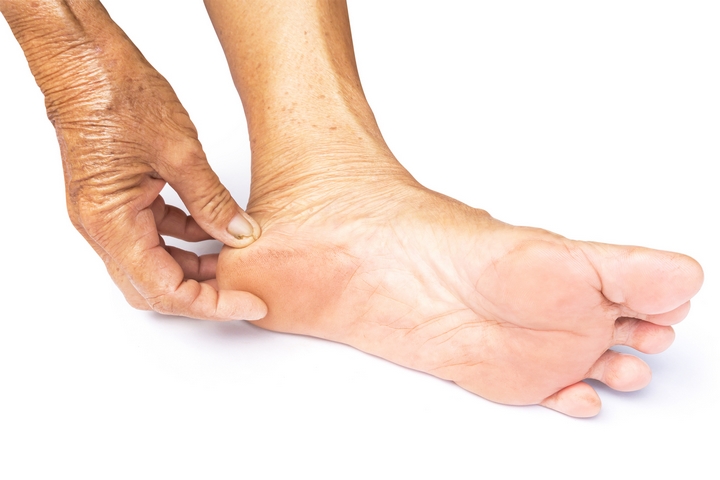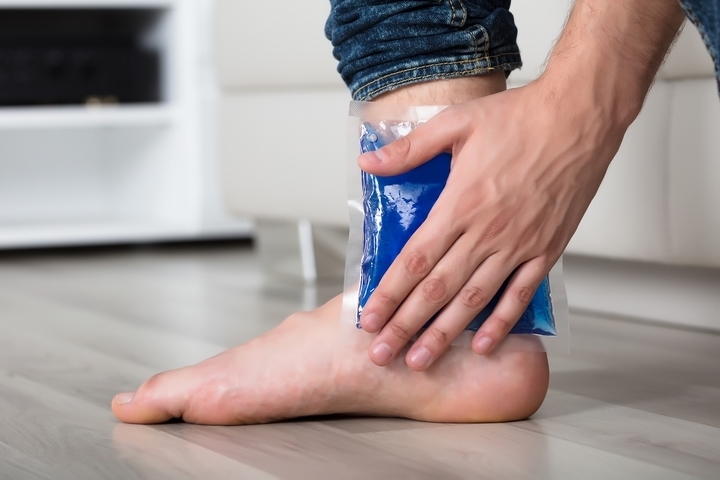Foot injuries are prevalent. You may have a foot injury regardless of where you are as long as you are moving around. It could be a missed step or a funny landing on the ground. Athletes, for instance, are highly susceptible to foot injuries. Statistics show that about 25 percent of athletic injuries are foot and ankle related.
Below are some different types of foot injuries you should be aware of.
1. Plantar Fasciitis
 You know you have plantar fasciitis if you feel pain in the heel or the arch of your foot. Typically, the pain is intense in the morning but gradually eases as the day progresses. It is caused by the inflammation of the thick band of tissue that cuts across the bottom of the foot. It is characterized by a stabbing or dull pain, usually with your first morning steps. If you do not stretch regularly, it may result in chronically strained calves and hamstrings, which increase your chances of plantar fasciitis.
You know you have plantar fasciitis if you feel pain in the heel or the arch of your foot. Typically, the pain is intense in the morning but gradually eases as the day progresses. It is caused by the inflammation of the thick band of tissue that cuts across the bottom of the foot. It is characterized by a stabbing or dull pain, usually with your first morning steps. If you do not stretch regularly, it may result in chronically strained calves and hamstrings, which increase your chances of plantar fasciitis.
Another factor that contributes to plantar fasciitis is work that exerts a lot of pressure on the heel. Some other factors include age, some types of exercises, foot mechanics, and obesity. To keep plantar fasciitis away, make a habit of stretching your lower legs daily or visit your physiotherapist regularly for chiropractic treatment.
2. Stress Fracture
 A stress fracture can be defined as a tiny crack or severe bruising within a bone. The fractures are mostly seen in highly active athletes or runners. They result from overuse or repetitive activities and usually show up when you switch to new activities or increase the intensity of your actions.
A stress fracture can be defined as a tiny crack or severe bruising within a bone. The fractures are mostly seen in highly active athletes or runners. They result from overuse or repetitive activities and usually show up when you switch to new activities or increase the intensity of your actions.
When walking or running, the weight-bearing bones absorb a lot of constant force, making them prone to stress fractures. To heal from a stress fracture, you will need to refrain from high impact activities for a while and wear comfortable orthotic shoes to alleviate the pain in your feet.
3. Ankle Sprains
 You have probably had your ankle twist at least one time in your life. This may have been as a result of a missed step or inappropriately landing on the ground. Often, this is nothing serious. However, if your ankle becomes swollen and painful, it means you have a sprain. In an ankle sprain, the foot rolls outwards while the ankle turns inwards.
You have probably had your ankle twist at least one time in your life. This may have been as a result of a missed step or inappropriately landing on the ground. Often, this is nothing serious. However, if your ankle becomes swollen and painful, it means you have a sprain. In an ankle sprain, the foot rolls outwards while the ankle turns inwards.
As a result, the ligaments on the inside of your ankle tear, causing excruciating pain. You are likely to strain your ankle if you engage in intricate footwork activities and sudden changes in direction such as those made by dancers. To prevent swelling and bruising after a sprain, elevate your ankle above your heart for a couple of hours every day.
4. Bunions
 Sometimes referred to as hallux valgus, bunions can be seen at the base joint of your big toes. It is a painful bony bump. The development of bunions is usually gradual. When the big toe joint is subjected to a lot of pressure, it leans towards the second toe. There are some simple treatments to relieve your pain, but you should see a doctor if these treatments fail. In severe cases, the doctor may recommend surgery to correct the bunion.
Sometimes referred to as hallux valgus, bunions can be seen at the base joint of your big toes. It is a painful bony bump. The development of bunions is usually gradual. When the big toe joint is subjected to a lot of pressure, it leans towards the second toe. There are some simple treatments to relieve your pain, but you should see a doctor if these treatments fail. In severe cases, the doctor may recommend surgery to correct the bunion.
5. Achilles Tendinitis
 The Achilles tendon links your calf muscle to your heel bone. When inflamed, you experience a mild pain near the back of your lower leg just above the heel, a condition known as Achilles tendinitis. You are likely to have Achilles tendinitis if you have tight calves. If the pain is not severe, just resting or placing some ice on the affected area will numb the pain. However, if your tendon is ruptured, surgery is unavoidable.
The Achilles tendon links your calf muscle to your heel bone. When inflamed, you experience a mild pain near the back of your lower leg just above the heel, a condition known as Achilles tendinitis. You are likely to have Achilles tendinitis if you have tight calves. If the pain is not severe, just resting or placing some ice on the affected area will numb the pain. However, if your tendon is ruptured, surgery is unavoidable.
6. Turf Toe
 Turf toe is generally a sprain in the main joint of the big toe, which is supposed to bend to a certain point. If the big toe bends beyond the normal range, the result is a turf toe. Trying to bend the toe back to its normal position only worsens the pain.
Turf toe is generally a sprain in the main joint of the big toe, which is supposed to bend to a certain point. If the big toe bends beyond the normal range, the result is a turf toe. Trying to bend the toe back to its normal position only worsens the pain.
This type of sprain normally results in swelling. It is a common occurrence during sports that are played on artificial turf such as football, hence the name turf toe. When the swelling on your toe subsides, you can tape it to minimize movements and keep it steady. It is also important to make sure you are wearing the right shoes to prevent such injuries.
7. Heel Spurs
 A heel spur can be described as a calcium deposit that results in an extra bone forming on top of another bone. Usually, this is very painful. They are often caused by tight ligaments as a result of continuous walking. They are mostly experienced by people who don’t have a normal arch on their feet but instead have flat feet. To loosen tight ligaments, do exercises that involve stretching your calf.
A heel spur can be described as a calcium deposit that results in an extra bone forming on top of another bone. Usually, this is very painful. They are often caused by tight ligaments as a result of continuous walking. They are mostly experienced by people who don’t have a normal arch on their feet but instead have flat feet. To loosen tight ligaments, do exercises that involve stretching your calf.
Foot injuries are often not given enough attention. It is important to treat foot injuries as soon as they occur since delaying treatment could result in more serious complications.

